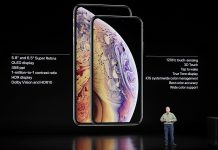Microsoft Introduces new voice technology.
On October 19th, 2016, Microsoft announced a new speech recognition technology that reportedly transcribes conversational speech as well as a human does, with an error rate of just 5.9%. As such, they claim this is an “Historic Achievement.” In theory, people will be able to issue commands to the computer and write text using voice commands to either your PC or smart phone.
Don’t get too excited just yet. This is actually an old technology. Back in 1996, with the advent of OS/2 Warp 4, speech navigation and VoiceType dictation was embedded in the operating system. As you may remember, OS/2 was IBM’s alternative to Windows on the PC. It was an excellent operating system, and I still have two computers running it flawlessly, but there was just one problem with it, IBM didn’t know how to market it and abdicated the desktop to Microsoft. OS/2 users, including yours truly, still recognize it as head and shoulders above anything Microsoft has produced, but that is another story.

Under OS/2, the user wore a voice activated microphone headset. From it, the user could navigate the computer using the commands found on action bars and pull down choices; for example: File, New, Open, Print, Save, Exit, Close, Find, Undo, Ok, Cancel, Maximize, Minimize, Help, etc. Frankly, it was quite efficient in operation and freed the user from simple tasks used with the keyboard and mouse. The second part was VoiceType dictation which allowed the user to dictate text for word processors, e-mails, and just about anything requiring text entries. Before you could use it though, they provided a routine which allowed you to train the computer. This was done by reading sections of literature from Mark Twain and took approximately one hour. The VoiceType dictation was effective but many people didn’t believe the computer could keep up with them and lost interest. As an aside, I suspect people no longer possess the skills needed to dictate a letter, something that has been lost in time as well as the “shorthand” language.
Another software product that acted in a similar manner was Dragon NaturallySpeaking by Nuance Communications in 1997 for use on the Windows platform. It is still actively marketed to this day. Other packages are also available.
Microsoft’s announcement is welcome news if it can process text faster and more accurately. Unfortunately, their announcement didn’t include a video or sample application to demonstrate their technology. The company even admits in their announcement, “the technology still has a long way to go before it can claim to master meaning (semantics) and contextual awareness.”
For more information on Microsoft’s speech recognition project, click HERE.
It’s interesting, OS/2 users always knew the operating system was way ahead of its time. Now we know precisely how many years ahead it was: 20.
Keep the Faith!













